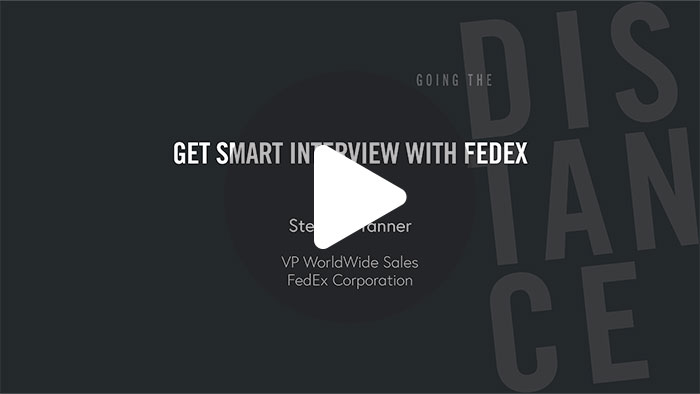Corporate Innovation in Retail
A practical framework for engaging with startups
- By [ Santosh Sankar ]
- 03/24/2020
This is a guest blog post by Dynamo Ventures Partner Santosh Sankar, as part of a series on innovation concepts relevant to retail.
Looking to the world’s most admired brands a common feature is their commitment to fostering a culture of innovation and change. Leadership at these organizations allocate resources to innovation in the same way they allocate to other key functions - it becomes a question of “how much?” rather than a question of “if?”. When it comes down to it, there’s a lot of talk about corporate innovation but few are able and willing to share a practical playbook to execute on their corporate innovation goals. Hopefully, we can help encourage discussion and action with this practical approach.
A Framework for Corporate Innovation
In my opinion, corporate innovation initiatives are about “moving fast and learning things” in an effort to improve and grow the business over the medium-to-short term. In practice, to be innovative there needs to be a willingness to accept that not everything will succeed. Great leadership will foster an environment that caters to thoughtful risk-taking in the name of learning.
Expose. The first step is to look internally to expose the problems and opportunities your organization face. Facilitate discussion with key stakeholders and determine priorities, understand the status quo, and internal R&D efforts. This exercise generally prepares a retailer to engage with startups and expose business units to different ways of solving problems, iterating on solutions, and making decisions. If starting from scratch, we’ve observed that a best practice has been to embed innovation into a line of business vs keeping it as a separate unit. This often limits bureaucracy and ties startup engagement closer with business unit needs.
Retailers need to have a steady cadence around startup engagement and not expect to find their solution or solve all their problems in one-go or with one-off engagements. Have a way to consistently engage with the startup ecosystem. This usually is best facilitated in the form of a startup program that scans the broader universe and curate companies most suitable to meet the business unit needs.
Execute. As a leading retailers engage with startups around key priority areas, the next step is to give the startup an opportunity to execute and prove they can move the needle. A retailer doesn’t need to run 100s of pilots, start with 1-2 and increase that number as you gain comfort (we’ve observed a natural limit of 8-10/year). Our five-step checklist helps to bring startups and retailers together in a collaborative way.
The Five Step Pilot Checklist
Being intentional about structuring pilots helps to increase the probability of success.
- Is there a clear internal champion/sponsor and point of contact?
- The scope of the pilot is reasonable - not too narrow, not too wide
- Does the pilot have a clear and reasonable start and end date? (no more than 60 days)
- Are there clear metrics and thresholds of success? (no more than three)
- Pay the startup - free pilots are meaningless for both sides
It’s important for retailers and startups to maintain open dialogue and transparency through the pilot period - a sponsor can help facilitate this. A retailer should be reasonable and clear about the scope of the pilot and avoid scope creep. Furthermore, companies should identify and share the metrics that matter to them and how they might derive a particular measure (ex: how a retailer calculates ROI might be different from how a startup does). At Dynamo we’ve seen that ongoing feedback around these metrics between startup and company helps increase the probability of success.
Expand. As a retailer moves through this innovation framework, they can double down on things that work for them. There is a duality to the expansion of innovation activities: converting pilots and extending ecosystem involvement.
If a pilot is successful, there should be a collaborative approach to expanding the scope of the engagement. A retailer can build a positive reputation and be a magnet for startup engagement if they make pilots and expansions easy. In particular, have a transparent vendor contracting process and willingness to walk a startup through it. It’s important to understand that a startup is not like an established, legacy vendor. They will need time to ramp to your organization’s needs.
Not every pilot will be successful. That’s ok and should be expected. The point is that the organization was able to learn from the engagement and move forward. It’s especially important to provide feedback to the startup and also share these learnings internally.
In terms of expanding ecosystem involvement, as a retailer gets more comfortable, they might consider deeper involvement in programs relevant to problem areas. This tends to manifest itself via sponsorship, hackathons, and ramping up the number of pilots.
Like most things, there’s no single way to engage startups but the hope is this provides a baseline. We need more discussions between retailers and sharing to improve processes, share success, and democratize learnings to improve the innovation ecosystem as a whole. If you have any questions or simply want to chat, feel free to reach out to us at Dynamo Ventures (hello@dynamo.vc) - we love hearing from our retail friends.
Dynamo Ventures is a member of RILA’s Innovation Network, which brings retailers together with venture capitalists, incubators, and accelerators driving innovation across the industry.
Tags
-
Technology & Innovation
-
Retail Innovation Center


